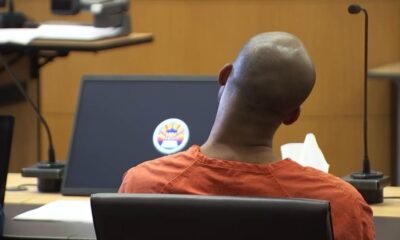Aaron Brian Gunches
Aaron Brian Gunches Faces Lethal Injection Execution: A Grim Finality

Kiera Riley, a courts and education reporter for the Arizona Capitol Times, served as a witness for the execution of Aaron Gunches on March 19. This marked a significant event, as it was the first execution carried out since Kris Mayes took office as Attorney General and Rachel Mitchell became Maricopa County Attorney in 2023.
In the witness room, Attorney General Mayes and County Attorney Mitchell displayed a stoic demeanor, reflecting the seriousness of the occasion. Gunches was condemned to death for the 2002 kidnapping and murder of Ted Price—a case that generated extensive legal complexities over the years.
Leading up to the execution, there was a substantial push from Price’s family for finality and justice, compounded by legal battles, pauses on capital punishment, and extensive reviews of death penalty policies. Ultimately, assurances regarding the drug supply and the competency of the medical team facilitated the resumption of executions in Arizona, underlined by Mayes’ commitment to a more transparent and accountable process.
The execution proceedings began at 10 a.m. The atmosphere in the viewing room was subdued as witnesses were ushered in, joining law enforcement personnel and members of the victim’s family. The room, primarily gray with dark curtains, concealed the somber events about to unfold.
As Gunches was escorted into the execution chamber, he lay still on the gurney, which was prepared methodically by medical staff. Despite the clinical environment, Gunches remained unresponsive to his witnesses, fixating only on the ceiling above as the IV lines were inserted. After several moments of silence, he questioned the delay in the proceedings.
Upon the reading of the execution warrant, Gunches declined to speak further. As the process commenced, distressing reactions were observed: Gunches’ breaths turned labored, and his body convulsed before he became motionless. At 10:33 a.m., he was officially pronounced dead, concluding an execution that had twice the weight of history behind it.
Over the span of 20 years on death row, many layers of controversy surrounded Gunches’ case. In 2002, he inflicted fatal harm on Price after a violent altercation involving Price’s then-girlfriend. Testimonies reveal a disturbing narrative of abduction and execution—a crime that not only claimed a life but left lasting scars on the victim’s family.
Despite the execution being deemed “textbook” by authorities, advocates for Gunches raised concerns over the integrity of the legal process. Dale Baich, one of his advisors, highlighted potential inhumanities in the execution method, suggesting the experience may have been agonizing, contrary to appearances.
Gunches, who had previously waived his legal appeals, had a tumultuous journey through the justice system. He represented himself at trial, made a guilty plea, and rejected the presentation of any mitigating evidence, raising alarms about the motivations behind his choices.
Despite an overturned initial death sentence in favor of a more comprehensive review, a jury reaffirmed the death penalty in a subsequent trial. Price’s family, especially his sister Karen, have carried the burden of loss throughout this prolonged ordeal, expressing their mixed emotions about this judicial conclusion.
Reflecting on the magnitude of the moment, Karen Price sought to articulate the depth of her loss. She acknowledged the finality of the execution, while lamenting that the emotional void from losing her brother persists irrespective of legal outcomes. She expressed gratitude to the new administration for prioritizing their needs in a complex legal landscape.


















